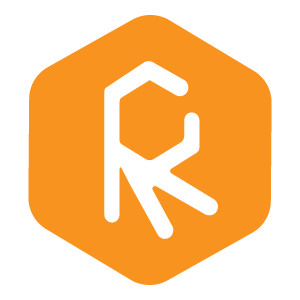Customer Experience vs. User Experience
While most designers directly influence User Experience, they also need to understand the larger context of the Customer Experience. The customer experience represents every step of the journey from when users are running price comparisons, to when users try the product, to when users may resort to customer service if their needs aren’t met.
Let’s explore the nuances of each field, and how a better understanding of CX makes you a much stronger UX designer.
What is User Experience?
The UX is the customer/user’s experience with a specific product, for our purposes, a website, app, or software. The design of the interface — its usability, information architecture, navigation, comprehension, learnability, visual hierarchy, etc. — all combine to create the UX, whether positive or negative.
The goal of the UX designers, then, is to make sure the brand designs products that solve the right problem in an efficient and enjoyable manner.
What is Customer Experience?
CX has a greater scope: it is the customer’s experiences with all channels of the brand, including a specific product like an app. CX is an umbrella concept encompassing all channels and all products within the same brand, and how the user feels about them.
Typically, CX refers to how users perceive:
- Customer service
- Advertising
- Brand reputation
- Sales process
- Fairness of pricing
- Product delivery
- Even each individual product’s UX
The goal of a CX consultant is to align business strategies with the actual customer’s overall experience, with the customer’s happiness in mind.
The Differences: UX vs. CX
Let’s illustrate the differences with two examples.
Bad UX & Good CX
First, let’s say you bought an app that edits pictures on your phone.
You bought it because you love programs like Photoshop, and you wanted such detailed features for your phone, especially one in particular. However, when you actually start using the app, you find the interface confusing and you can’t even find the feature you wanted. (UX)
Luckily, they have a help line. You call, and a friendly customer service rep answers quickly and explains, step-by-step, how to access the feature you wanted. Everything seems clear now. In addition, they give you a $25 credit for your trouble. (CX)
This is a good example of a bad UX but a good CX. The app’s interface was confusing and poorly orchestrated which made using it a bad experience. However, your experience with the other aspects of the app’s brand — the customer service and the free credit — were great.
But it can work both ways. Our second example below is all too common.
Good UX & Bad CX
You want to order airline tickets. You think it’s easier to download an airline’s app to browse and buy tickets. You’re right. Even though you’ve never used an airline app before, the self-explanatory interface, clear navigation, and fast loading time allow you to find and book the perfect flight in under 10 minutes. (UX)

Photo credit: Virgin Atlantic Android App
Once you get to the airport, though, it’s a totally different story. The check-in booth is understaffed and the line in unnecessarily long. The attendant is abrasive, and you don’t like the way the staff throws your checked baggage around. On the flight itself, the service isn’t much better. (CX)

Photo credit: “Airport Line.” Jaysin Trevino. Creative Commons
While one aspect of the brand, the app, satisfied you, the other areas did not. No matter how good the app’s UX was, it didn’t make up for the other services, which ultimately damaged the overall CX. Bottom line: you’re not happy with the money spent vs. service received.
For satisfied customers, you need consistency between the UX and CX.
Customers interpret all the events as the overall brand experience. They’re either satisfied, or they’re not.
4 Ways UX Improves CX
Make no mistake: UX is one of the strongest influences on the overall CX.
Here are 4 UX techniques that improve CX:
1. Easy customer feedback — Don’t bury a customer helpline in a hard-to-find place. You want communication with your user to be as open and easy as possible. Create clear and readily visible calls-to-action, or even elicit feedback with modals. Customers enjoy being heard, but it’s up to you to open that line of communication. From a UX standpoint, the aggregate feedback will also reveal insights for product improvement.

2. Provide feedback to feedback — Remember what we said about the customer being heard? The integral part of that is giving them feedback that their comments are being implemented, or at least were read. The tone of your product and website should all align to the tone used in customer support responses.
3. Combine channels in the right context — A multi-device experience is always a solid strategy, considering that 90% of users complete a single task on more than one device. Apply this to CX by linking customer service or other relevant services/products at the correct touchpoint. For example, Citibank, like many other sites (like Amazon), allows instant messaging with customer service reps as part of the existing user flow, a huge time-saver for anyone that’s taken advantage of it.
4. Provide context across teams — Customer service or supply chain teams certainly shouldn’t dictate the product design, but they must be involved in the product design process. Designers should seek their input on feasibility and explain how their roles help fulfill the product promise (and how they can salvage it should issues arise). Customer journey maps then help everyone visualize the entire experience.
Key Takeaway
UX is just one part of the greater CX landscape.
The CX covers the customer’s interactions with every facet of the brand, which naturally includes the digital product, whether it’s a website, app, or software. The UX is limited only to interactions with product entities (the brand’s website delivers one experience and the app another).
Source: UXPIN

